Peabody College Amassed an Impressive Fine Arts Collection Before Joining Vanderbilt
 When George Peabody College for Teachers merged with Vanderbilt University in 1979, the agreement came with a little-known perk: The school had acquired a sizable collection of art stored in a basement vault at Cohen Memorial Hall.
When George Peabody College for Teachers merged with Vanderbilt University in 1979, the agreement came with a little-known perk: The school had acquired a sizable collection of art stored in a basement vault at Cohen Memorial Hall.
With more than 1,000 works, the Peabody College Collection includes items ranging from antiquities to Renaissance paintings to influential mid-20th-century sculptures and other pieces. The collection has provided many works for study and exhibition across the Vanderbilt campus in recent years, as well as loans to museums around the world. Read more…
*Article by Bonnie Arant Ertelt, BS’81, Vanderbilt Magazine (Winter 2017); image: The Skyscraper Window (1934) by American painter Childe Hassam, oil on canvas. Courtesy of The Peabody College Collection, Vanderbilt University Fine Arts Gallery.
Posted by vrcvanderbilt on December 13, 2017 in Fine Arts Gallery, HART, News, Student/Alumni, VRC
Mireille Lee Participates in “Demo Day” at the Wond’ry on December 12
Tuesday, December 12, is “Demo Day” for the Wond’ry’s University Course “Virtual Reality for Interdisciplinary Applications” taught by Professors Bobby Bodenheimer and Ole Molvig. An end-of-semester demonstration of student-faculty projects was held late afternoon on the second floor of the Wond’ry.
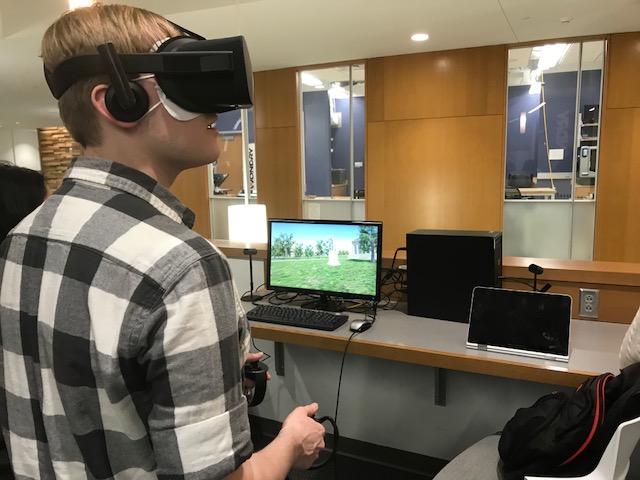 Bodenheimer and Molvig were joined by eight other Vanderbilt faculty, including Mireille Lee, assistant professor of history of art, who demonstrated creative approaches to the application of virtual reality (VR). Each student group and faculty mentor proposed and prototyped a VR experience of relevance to their mentor’s area of study. Lee has served as a faculty mentor, and her project area is Centennial Park in Virtual Reality; Augmented Reality.
Bodenheimer and Molvig were joined by eight other Vanderbilt faculty, including Mireille Lee, assistant professor of history of art, who demonstrated creative approaches to the application of virtual reality (VR). Each student group and faculty mentor proposed and prototyped a VR experience of relevance to their mentor’s area of study. Lee has served as a faculty mentor, and her project area is Centennial Park in Virtual Reality; Augmented Reality.
Other faculty mentors participating in the demonstration were John Rieser, psychology (Singing with an Avatar); Maithilee Kunda, computer science (Memory and Visual Thinking; Memory Palace); Alan Peters, computer science (Computer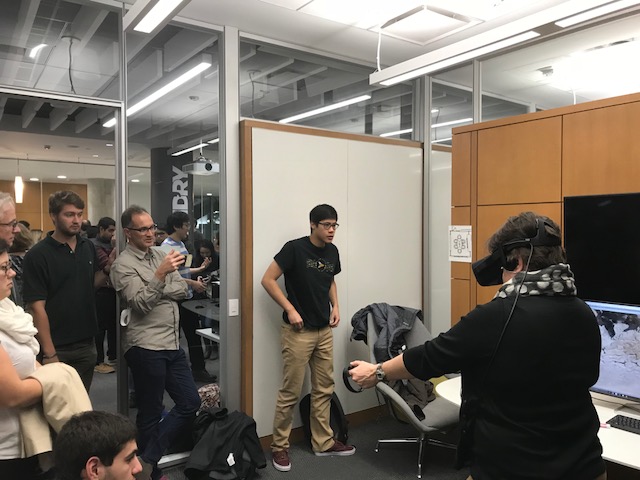 Vision; 3D Stereographic Image Recovery); Bobby Bodenheimer, computer science (Navigation for Large 3D Environments); Ole Molvig, history of science (Impossible Spaces, Alternative Physics); Lynn Ramey, French (Medieval Cyprus Game; Cross-Cultural Storytelling); Steven Wernke, anthropology:(Excavations in Virtual Reality; Preserve, Research, Share); Jay Clayton, English (Ready Player One; Create Aech’s Hideaway); and Gurjeet Birdee, medicine (BIometrics and Virtual Reality; Breathing and Meditation Research).
Vision; 3D Stereographic Image Recovery); Bobby Bodenheimer, computer science (Navigation for Large 3D Environments); Ole Molvig, history of science (Impossible Spaces, Alternative Physics); Lynn Ramey, French (Medieval Cyprus Game; Cross-Cultural Storytelling); Steven Wernke, anthropology:(Excavations in Virtual Reality; Preserve, Research, Share); Jay Clayton, English (Ready Player One; Create Aech’s Hideaway); and Gurjeet Birdee, medicine (BIometrics and Virtual Reality; Breathing and Meditation Research).
*Student demonstrating Mireille Lee’s project on Centennial Park in Virtual Reality (above); Betsey Robinson, associate professor of history of art, experiencing Steven Wernke’s project on Peruvian Excavations in Virtual Reality (below). Photographs courtesy Millie Fullmer
Posted by vrcvanderbilt on December 12, 2017 in Digital Humanities, Events, HART, Lectures, News, Technology, VRC
Celebrating Donut Days in the VRC December 11, 12 and 15

Posted by vrcvanderbilt on December 5, 2017 in Events, HART, News, Student/Alumni, VRC
Free Coffee Available in the VRC Throughout Final Exam Week
 As the fall semester comes to a close, the Visual Resources Center (VRC) invites students, faculty, and staff to join us for a free cup of coffee—or two or three—in Cohen 134. Coffee will be available throughout the day during the final exam week, beginning on “reading day,” Friday, December 8.
As the fall semester comes to a close, the Visual Resources Center (VRC) invites students, faculty, and staff to join us for a free cup of coffee—or two or three—in Cohen 134. Coffee will be available throughout the day during the final exam week, beginning on “reading day,” Friday, December 8.
Pour yourself a cup and dash to class or stay for a while and review images streaming across the big screen at the end of our large study table or simply sit down and take some time to relax and enjoy a cup of java. The VRC is open weekdays from 8:00 a.m. to 6:00 p.m.
Posted by vrcvanderbilt on December 5, 2017 in Events, HART, Student/Alumni, VRC
Vivien Fryd to Present Lecture at University of Paderborn on December 7
Vivien Fryd, professor of history of art, will deliver a lecture addressing “Equal Time in Equal Space: Ending the Silence about Incest” at the University of Paderborn, Germany, on December 7. Her presentation is part of a two-day interdisciplinary and international conference entitled “Narratives and Mental Health: Fragmentations, Disruptions and Silences.”
The December 7-8 conference, sponsored by the University of Paderborn and the University of Gothenburg, offers a forum for cross- and interdisciplinary debate among scholars and practitioners working in diverse fields: literary and cultural studies, sociology, philosophy, theology, psychoanalysis (or psychology in general), art history (including the history of architecture), film studies, and political theory.
The College Art Association (CAA) recently awarded Fryd a $5000 Wyeth Foundation for American Art Publication Grant for her book “Against Our Will”: Sexual Trauma in American Art Since 1970 (Pennsylvania State University Press, forthcoming December 2018). Since 2005 the Wyeth Foundation for American Art has supported the publication of books on American art and visual studies through these publication grants administered by CAA.
Fryd provides the reader with a social history of the larger cultural world surrounding the two traumatic subjects of rape and incest that had been purposefully ignored within academic art history and within the culture at large. In her book she demonstrates that for more than forty years a key group of American artists have insisted upon ending the silence and have contributed to an anti-rape, anti-incest counternarrative, which she discusses as an anti-rape and anti-incest cycle.
Posted by vrcvanderbilt on December 4, 2017 in Conferences, Events, HART, Lectures, News, VRC
HART Cosponsors “The Portraits of Afro-Cuban Artist Erik Olivera Rubio” on December 4

Afro-Cuban portrait artist Erik Olivera Rubio focuses on the African experience in the Diaspora. His portraits are a modern expression of blackness—realistic, striking and colorful. As William Luis explains, Olivera Rubio’s work embraces black identity and “focuses on the strong, determined, remarkable, beautiful, and proud black figure.”
Join the Latino and Latina Studies Program and the Afro-Hispanic Review on Monday, December 4, at 4:10 pm in the Kissam MPR for “The Portraits of Afro-Cuban Artist: Erik Olivera Rubio” with reception to follow.
Growing up in Havana, the artist was surrounded by traditions of the Yoruba people, who are the descendants of Africans uprooted from their homes by slavery and transported to the Caribbean.
Olivera Rubio, a graduate of San Alejandro Academy of Fine Arts, Havana, has exhibited in London, Italy, France, Florida and throughout Havana, Cuba. His mastery of drawing and painting demonstrates his powerful imagery, absolute command of portraiture and dazzling technical virtuosity that imbues all his works with a staggering force.
This event is cosponsored by the Afro-Hispanic Review, the Latino and Latina Studies Program, the Department of History of Art, the Department of Spanish and Portuguese, and Inclusion Initiatives and Cultural Competence.
Posted by vrcvanderbilt on November 30, 2017 in Events, HART, News, VRC
HART Majors Rose Milnes and Lillian Boyle Awarded Fall 2017 Downing Grants
The Department of History of Art recently awarded Fall 2017 Downing grants to Rose Milnes and Lilliian Boyle. The department awards these Downing grants for travel to exhibitions and research centers to supplement academic instruction for HART majors who are in the Honors Program, in advanced seminars, or in upper-level “W” (writing) courses. These grants provide assistance for up to $2,000 in travel costs and are awarded in the fall and spring semesters of each academic year.
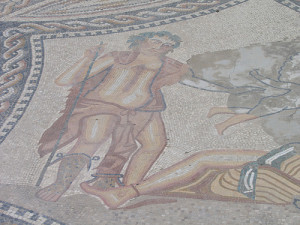 Inspired by her Ancient Landscapes class with Prof. Betsey Robinson coupled with a personal connection to Morocco (her mother’s family descends from the Berbers who are native Moroccans), Milnes traveled to Morocco to study the mosaics of the ancient town of Volubilis, especially those with mythological themes. Many of them remain in situ on the floors of town houses she visited—the House of Orpheus, House of Ephebe, House of the Knight, House of Venus, House of the Labors of Hercules, and House of Dionysus—or were moved to the Rabat Archaeological Museum where she continued her viewing and research.
Inspired by her Ancient Landscapes class with Prof. Betsey Robinson coupled with a personal connection to Morocco (her mother’s family descends from the Berbers who are native Moroccans), Milnes traveled to Morocco to study the mosaics of the ancient town of Volubilis, especially those with mythological themes. Many of them remain in situ on the floors of town houses she visited—the House of Orpheus, House of Ephebe, House of the Knight, House of Venus, House of the Labors of Hercules, and House of Dionysus—or were moved to the Rabat Archaeological Museum where she continued her viewing and research.
Milnes will address how these mythological stories are depicted in North Africa in her research paper, Mythological Experiences in Roman North Africa: Mosaics in Volubilis. Do these stories have relevance to Volubilis itself? How do these stories reflect Roman societal culture and its values, especially in North Africa?
Milnes visited ancient historical sites and modern cities as well as several museums in her week-long stay in Morocco and plans to share her insights and photographs from her travels in a future blog post.
The home of Lillian Boyle’s great uncle in Rustic Canyon  in Southern California was designed by Ray Kappe. Thus her interest in the world-renowned architect whose work is regarded “as an extension of such Southern California architectural masters as Frank Lloyd Wright and Richard Neutra,” she wrote in her grant proposal.
in Southern California was designed by Ray Kappe. Thus her interest in the world-renowned architect whose work is regarded “as an extension of such Southern California architectural masters as Frank Lloyd Wright and Richard Neutra,” she wrote in her grant proposal.
Boyle traveled to Los Angeles to see the homes firsthand—at least three are in Rustic Canyon—and gather research from the Ray Kappe Archives housed in the Getty Research Institute. Kappe’s homes are known for their interaction with natural surroundings, “especially in Rustic Canyon, where his architecture represents the ultimate expression of the indoor-outdoor connectivity of his canon,” she wrote.
With her research paper (under Prof. Leonard Folgarait) focused on Kappe’s work in Rustic Canyon, Boyle will investigate the complicated relationship between humans and nature stemming from man-made architectural environments. Kappe’s architectural style “aims to reconcile this irresolvable tension through emphasizing the site and respecting the geography of the canyon; consequently, his homes in Rustic Canyon are applauded for fitting their environment.”
*Detail of Volubilis mosaic courtesy of Lietmotiv; photograph of Ray Kappe courtesy of Kappe Architects
Posted by vrcvanderbilt on November 28, 2017 in HART, News, Student/Alumni, VRC
Heeryoon Shin Featured in November 9 Panel Discussion of Film on Indian Modernity
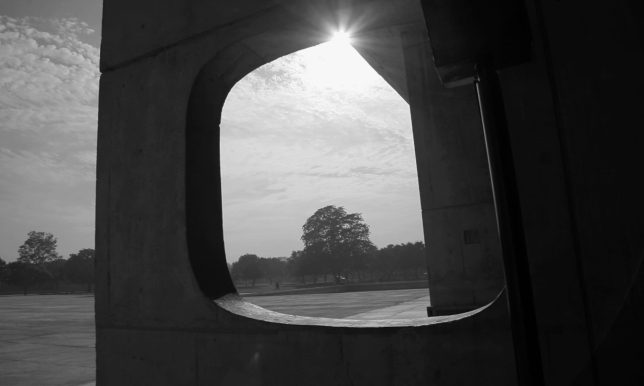 Nostalgia for the Future is a film about modernity, the making of the Indian citizen and the architecture of the home. It is a collaboration between filmmaker Avijit Mukul Kishore and architect Rohan Shivkumar, emerging from the intersection of their respective disciplines—architecture and documentary film—both of which have been ingrained in the discourse of utilitarianism and certainty. The film explores the role of architecture and film in imagining and constructing a nation and its citizenry.
Nostalgia for the Future is a film about modernity, the making of the Indian citizen and the architecture of the home. It is a collaboration between filmmaker Avijit Mukul Kishore and architect Rohan Shivkumar, emerging from the intersection of their respective disciplines—architecture and documentary film—both of which have been ingrained in the discourse of utilitarianism and certainty. The film explores the role of architecture and film in imagining and constructing a nation and its citizenry.
After the 54-minute screening on Thursday, November 9, at 4:10 pm in Cohen Memorial Hall, Heeryoon Shin, assistant professor of history of art, and Akshya Saxena, assistant professor of English, will participate in a panel discussion with the film directors. A reception will follow in the atrium of Cohen Hall on the Peabody campus.
The film examines four buildings created over the period of a century: Lukshmi Vilas Palace in Baroda—the gigantic home built by a progressive monarch in the late 19th century; Villa Shodhan in Ahmedabad—a private residence designed by Le Corbusier and representing the idea of domesticity within Nehruvian modernity; Sabarmati Ashram in Ahmedabad, which epitomizes the Gandhian aspirations of the nation-state; and public housing in post-independence Delhi, designed by the Government of India to house refugees from Pakistan and the bureaucrats of the newly independent nation.
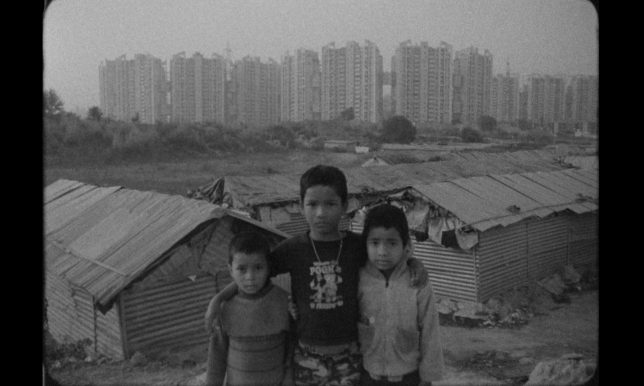 The film explores these spaces and imagines the bodies that were meant to inhabit them through the evocation of the cinematic and aural collective memory of a nation. It uses a mix of formats—16mm film and digital video in both color and black and white, along with archival footage from state propaganda films and mainstream cinema.
The film explores these spaces and imagines the bodies that were meant to inhabit them through the evocation of the cinematic and aural collective memory of a nation. It uses a mix of formats—16mm film and digital video in both color and black and white, along with archival footage from state propaganda films and mainstream cinema.
Avijit Mukul Kishore is a filmmaker and cinematographer based in Mumbai, working in documentary and interdisciplinary moving-image practices. Rohan Shivkumar is an architect and an urban designer practicing in Mumbai, and Deputy Director at the Kamla Raheja Vidyanidhi Institute for Architecture and Environmental Studies.
The event is sponsored by the Departments of History of Art, Cinema and Media Arts, Asian Studies, Political Science, and History.
*Stills from Nostalgia for the Future (2017) directed by Avijit Mukul Kishore and Rohan Shivkumar
Posted by vrcvanderbilt on November 7, 2017 in Events, HART, Lectures, News, VRC
Rebecca VanDiver’s Women in Art Class Exhibit On View in Visual Resources Center
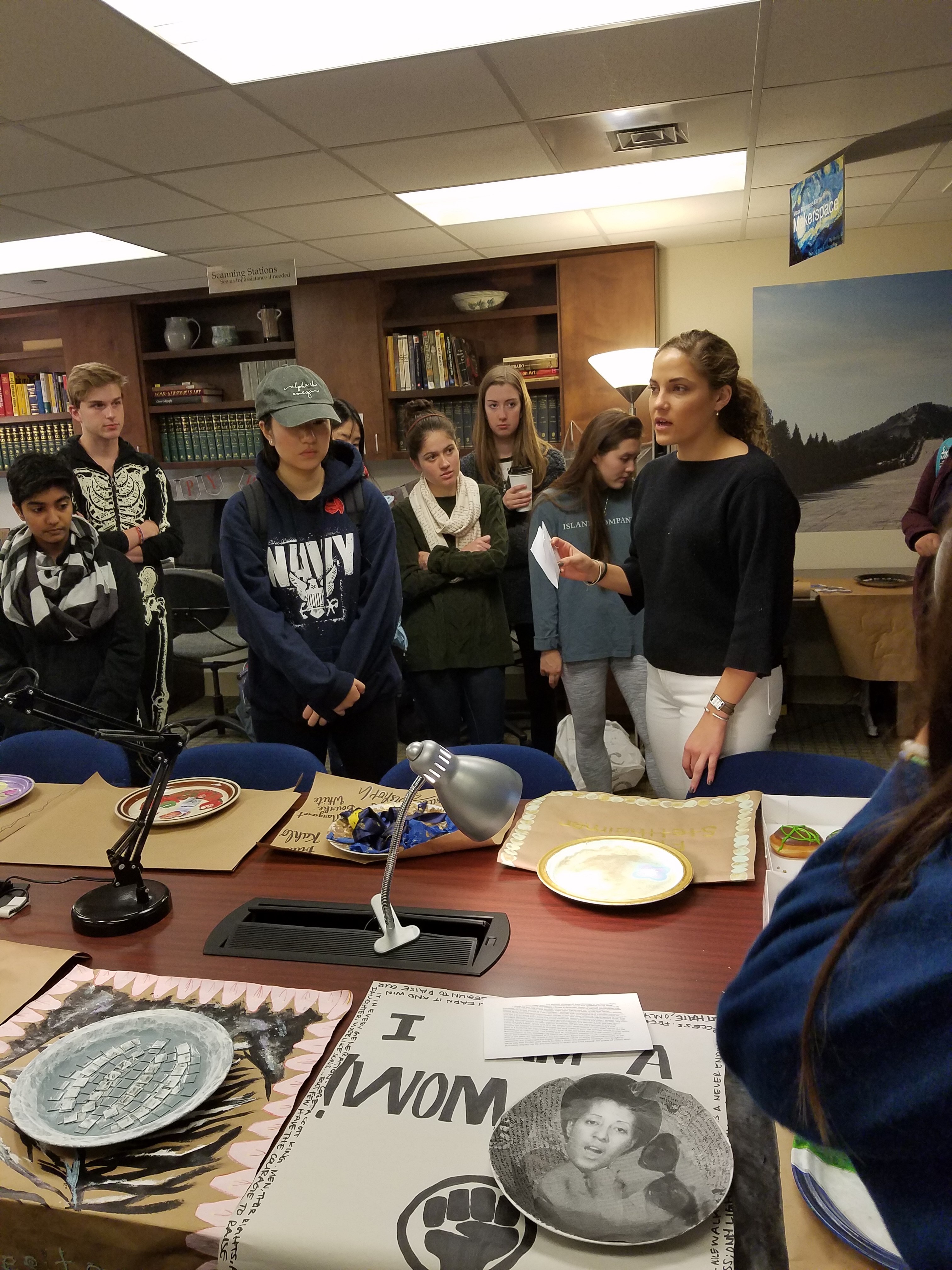 Rebecca VanDiver’s HART 2755 Women in Art class have curated an exhibit that pays homage to Judy Chicago’s “The Dinner Party” installation (1979)—replete with porcelain plates and place mats or table runners imaginatively decorated by each student according to the individual artist represented: Vanessa Bell, Isabel Bishop, Elizabeth Catlett, Teresita Fernández, Eva Gonzales, Dorothea Lange, Ana Mendieta, Yoko Ono, Howardena Pindell, among others.
Rebecca VanDiver’s HART 2755 Women in Art class have curated an exhibit that pays homage to Judy Chicago’s “The Dinner Party” installation (1979)—replete with porcelain plates and place mats or table runners imaginatively decorated by each student according to the individual artist represented: Vanessa Bell, Isabel Bishop, Elizabeth Catlett, Teresita Fernández, Eva Gonzales, Dorothea Lange, Ana Mendieta, Yoko Ono, Howardena Pindell, among others.
Students “presented” their artist’s plates on October 30 and again on November 2. The Visual Resources Center (Cohen 134) is hosting the exhibit, which closes at 4 pm on Thursday, November 2, with further viewing on Friday, November 3, after 10:30 am.

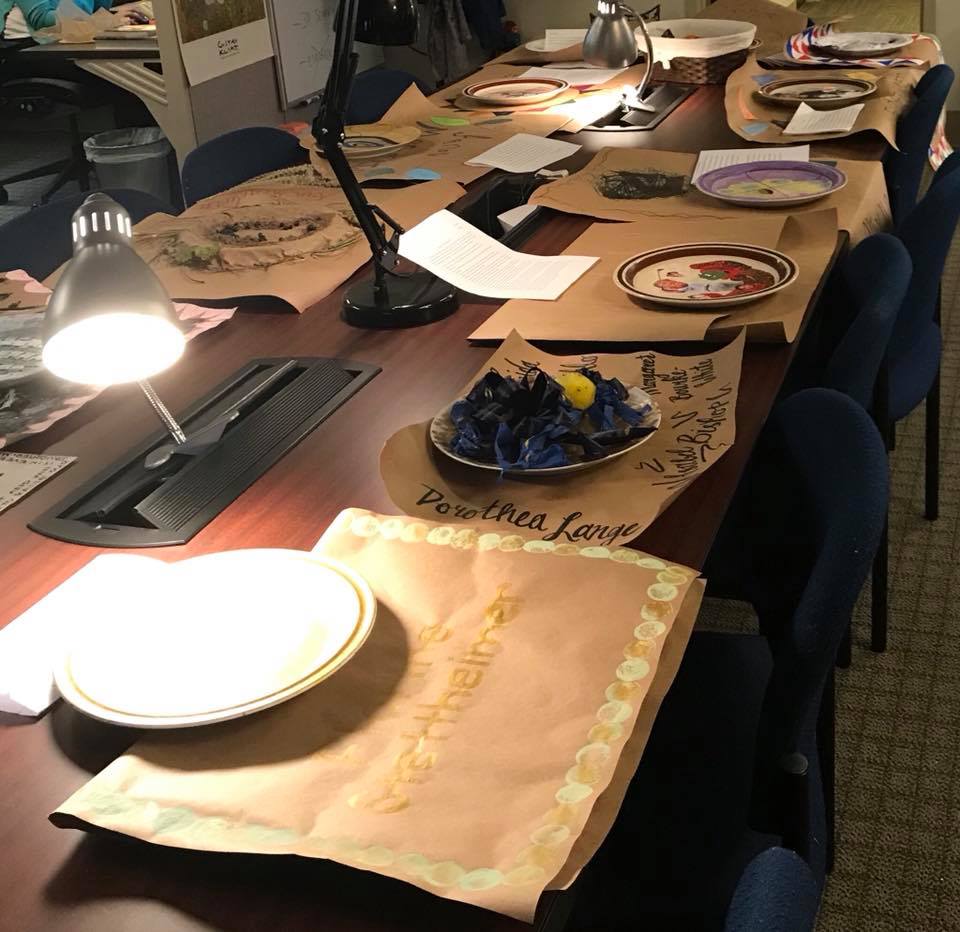
Posted by vrcvanderbilt on November 1, 2017 in HART, Lectures, News, Student/Alumni, VRC
Bettina Bergmann to Offer Imaginative View of Roman Art in November 2 Goldberg Lecture
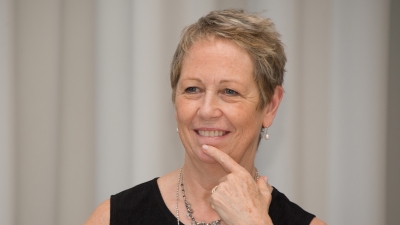 Bettina Bergman, a leading expert on Greek and Roman art and the art of landscape, explores the visual and intellectual world of the ancient Romans. Bergmann will deliver the Norman L. and Roselea J. Goldberg Lecture in Art History on Thursday, November 2, in 203 Cohen Memorial Hall. Her presentation, which begins at 4:10 pm, is titled “Across the Universe: the Bird’s Eye View in Roman Art,” followed by a reception in the atrium.
Bettina Bergman, a leading expert on Greek and Roman art and the art of landscape, explores the visual and intellectual world of the ancient Romans. Bergmann will deliver the Norman L. and Roselea J. Goldberg Lecture in Art History on Thursday, November 2, in 203 Cohen Memorial Hall. Her presentation, which begins at 4:10 pm, is titled “Across the Universe: the Bird’s Eye View in Roman Art,” followed by a reception in the atrium.
Bergmann, The Helene Phillips Herzig ’49 Professor of Art, Department of Art History, Mount Holyoke College, notes that the Romans knew navigation on land and sea, but not the perspectives and sensations achieved in flight. The innovative device of the elevated, inclusive bird’s eye view presented an impossible array of viewpoints as one harmonious, coordinated whole.
“From the mythological flights of Icarus and Phaethon to two-dimensional city grids, the elevated view reveals the critical role of boundaries in defining space and the compelling imperative of integration,” she said. “It invites the viewer’s exploration and ordering of great expanses, cognitive processes that resonated with the acquisition of empire.”
Bergmann uses three-dimensional models—real or VR—to help modern viewers see how the fragments of frescoes displayed in museums originally functioned in ancient Roman buildings. She recreates the interiors of Roman homes using her expertise of Roman history, reports by archaeologists, and records left by ancient and modern visitors. Acclaimed for her imaginative work in reconstructing how Romans decorated their houses, she has reconstructed several of the houses buried at Pompeii as well as 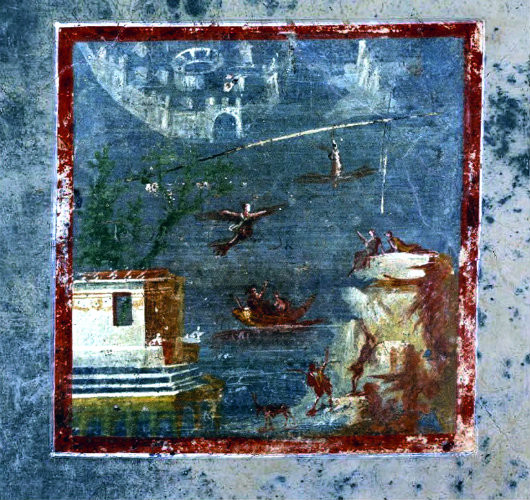 luxury villas elsewhere in Italy.
luxury villas elsewhere in Italy.
“Their sense of space was very different from ours,” she told an interviewer. “We have TV to engage us visually, and we tend to leave our floors, walls, and ceilings relatively bare. But the Romans used walls, ceilings, and floors as a kind of visual stimulation, something that would make them think.” Her scholarly articles arising from this work, such as “The Roman House as Memory Theater,” are themselves models of close visual attention and theoretical sophistication. She argues that Romans had a “protean and cinematic” sense of architectural space, and experienced something like time travel as they contemplated depicted landscapes from ancient Greece.
“I’m thrilled to welcome Professor Bergmann to Nashville,” said Betsey Robinson, associate professor of history of art. “She is an incredibly influential scholar of ancient art. She extends her investigations of ancient architecture and interior design into fascinating studies of environmental and social history.”
Bergmann earned a bachelor of arts in comparative literature at Berkeley and a master of arts in classical archaeology from the Archaeological Institute in Bochum, Germany. She also received a doctor of philosophy in art history and archaeology from Columbia University. Her publications include The Ancient Art of Spectacle, co-edited with Christine Kondoleon (Yale University Press, 1999). That same year she co-curated (with Mount Holyoke curator Wendy Watson) The Moon and the Stars: Afterlife of a Roman Empress, an exhibition at the Mount Holyoke College Art Museum that focused on the newly acquired bust of Faustina the Elder. Bergmann is currently writing essays on Roman gardens and their paintings, Roman interiors, and the Roman house. She is preparing two books for publication, one on Roman ensembles and the other on Roman landscape.
Free and open to the public, the Goldberg Lecture is sponsored by the Department of History of Art. Limited parking is available in Lot 95 outside Cohen Hall on the Peabody campus. For more information, call (615) 322-2831.
Photograph of Bettina Bergman courtesy of Mount Holyoke College; Flight of Icarus, fragment of Roman wall painting from Pompeii, ca. 50-79 CE.
Posted by vrcvanderbilt on October 30, 2017 in Digital Humanities, Events, HART, Lectures, News, VRC

©2025 Vanderbilt University ·
Site Development: University Web Communications